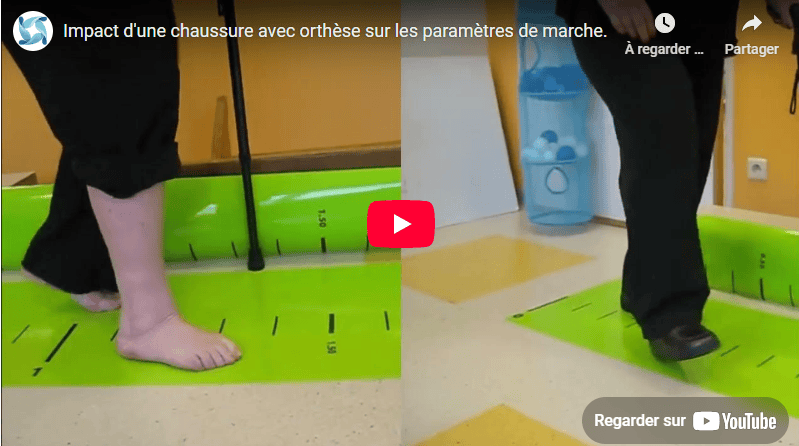
Observe the immediate effects of adding a shoe and orthosis on the gait parameters of a patient with right hemiparesis following a stroke.
Observed characteristics:
Observed characteristics:
Overall result:
Significantly increased walking speed with the orthosis and shoe.
In this patient, the right foot varus (without equinus, due to an active anterior tibialis) is particularly pronounced in case of pain (e.g., claw toes) or imbalance.
The shoe alone, although providing partial support, is not sufficient to correct the varus or ensure a secure plantar support.
Orthoses, like mobility aids, play a key role in helping patients walk:
Given the observed persistent varus:
This clinical demonstration illustrates the importance of:
These elements are essential to improve gait fluidity, safety, and quality of life for post-stroke patients.
When the walking situation does not allow for the use of an orthosis and shoe (for example, when going to the shower), using a more stable walking aid helps compensate for this loss of foot stability. For hemiplegic patients, the one-handed walker Wheeleo® is particularly suitable.
Please fill in this short form so that we can contact you to arrange a test.